Iona’s bird life is both prolific and ever changing with the seasons. Together with the sea-birds who both nest and visit the island, there are many land birds who call Iona home for at least part of the year. For instance, in early summer you will no doubt hear the rasp of a corncrake in a hayfield. These birds are staging a recovery breeding on the west coast of Scotland, helped by supportive farming practices. Similarly, walking to the west side of the island, a skylark might be singing its heart out above you. You stare into the sky and finally focus on a speck in the distance, and then watch as it descends slowly to the ground, singing all the time.
Over on the machair and down to the shore you can spot the waders at work. Perhaps a ringed plover with its black necklace or a turnstone exploring under a piece of seaweed. Eider ducks patrol the coast, with their heavy beaks able to master the mussels. The females are dark brown but the males are resplendent in their black and white outfits, and if you get closer you will see green patches behind their ears.
Shelducks might be there too with their chestnut breast bands, read beaks and white bodies, or a heron standing motionless by a rock pool waiting for an unwary prey to show itself. Overhead you might hear the thin cry of a buzzard, or the chatter of a peregrine falcon. Sea eagles sometimes soar over from Mull, looking like barn doors with white tails.
In short there is a vista of bird life awaiting the visitor, and with a keen eye and a pair of binoculars or just an idle gaze along the foreshore, you can see some of the most beautiful bird life that Britain has to offer.
Corncrake
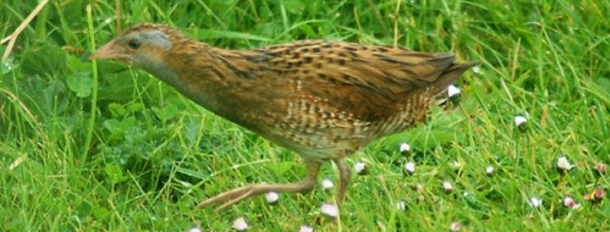
In the past ten years, the Corncrakes’ calls have steadily filled the island with their iconic sounds during the summer. Though relatively small and brown, they are remarkable birds for their persistence of calls, and the shear distance they migrate to nest on our wee island. If you are very lucky you will see one, perhaps flying weakly towards a better hiding place – making it hard to believe that it has flown all the way from Africa
Puffins
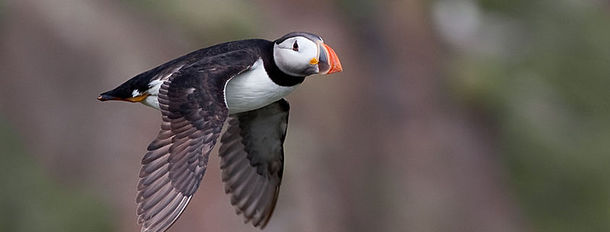
The first thing that strikes you when you see a puffin is just how small it is. A visit to Lunga or Staffa in June and July will reward you with a close encounter with these sociable birds. You can sit with them and watch the vivid colours of their beaks and their quaint antics, sounding like little old men quarrelling. You might see one with a beak full of sand eels or nesting material. After breeding they head off out to sea for the rest of the year.
Skylark
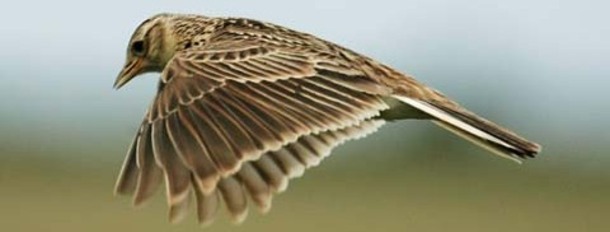
The song of the skylark is evocative of summer and the smell of new-cut hay. Its continuous and ever-changing song high above you encourages you to try to spot it.
Oystercatcher
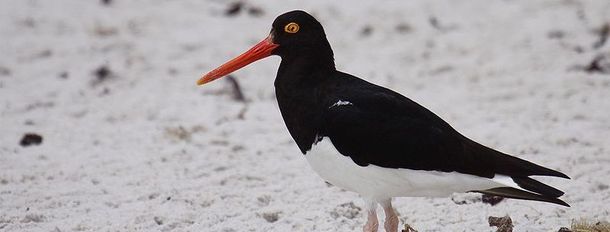
Oystercatchers are military birds, with their bright red bayonet beaks and their smart black and white uniforms. They often stand together in small platoons, or explore the shore for molluscs. They are strident in sounding the alarm if you get too close.
Shelducks
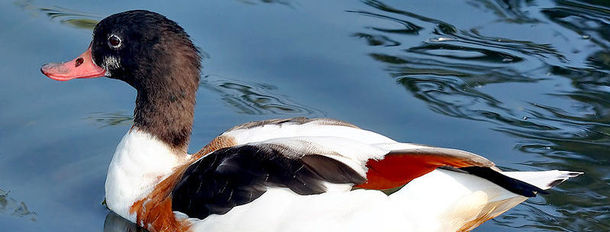
Shelducks are majestic and graceful ducks, with their chestnut breast bands, read beaks and white bodies. Often seen in the sea off the machair, they raise their young there and are nervous if you approach. They are quite large, almost goose-like, and generally silent.
Tern
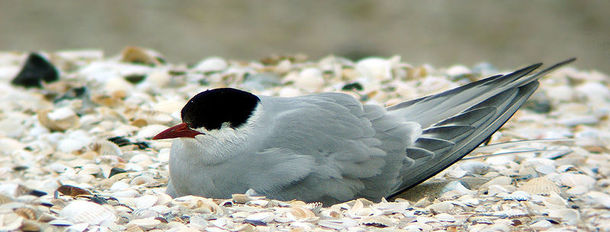
Arctic terns are the most delicate of birds, with their bouncing flight, their long tail feathers, slender bodies and pointed wings. They are often seen hovering and dipping into the Sound of Iona catching sandeels. They used to nest on Eilean Annuradh until recently and would defend their nests from trespassers with shrill cries and aggressive dive bombing. The mink stopped them for a few years but a mink trapping program has seen them back again.
Goldfinch
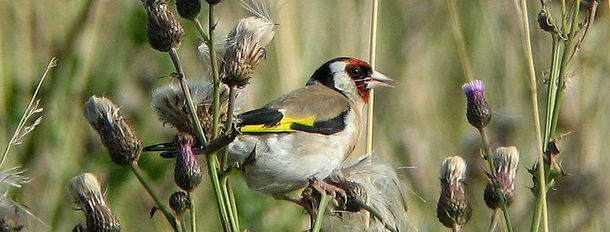
You will often see goldfinches in or around the village. They are the most colourful of birds, not what you would imagine a British bird to be, with gold, red, white black and tan bodies. They are quite often in small groups and they have a delightful wittering call.
Gannet
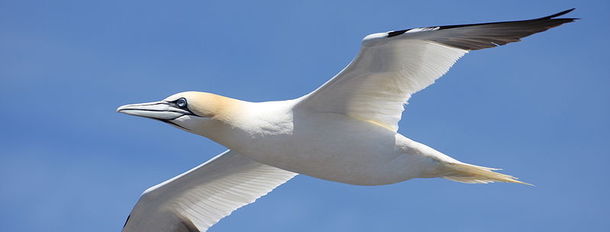
Gannets are enormous and dramatic, with their straight white wings, 1.8m across, and long dagger-like beaks. They patrol the Sound of Iona, maybe 30 metres up, and then plunge like an arrow into the water to take an unsuspecting fish, leaving a plume of white spray.
Great Northern Diver
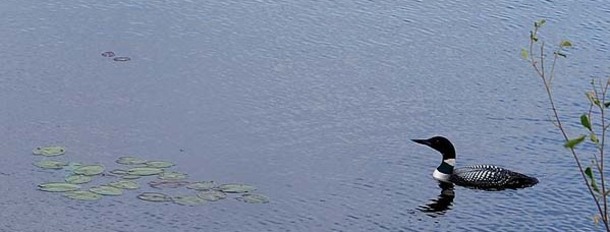
A rarer visitor to Iona but spectacular, with its striking black and white plumage, sitting low in the water. Its flight is unmistakable with its head and legs drooping slightly below the line of its body. You don’t hear its call much, but further north in a highland loch, its mournful yodelling song is utterly haunting.
Peregrine Falcon
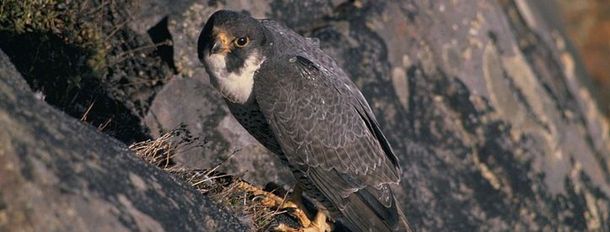
These are a fairly common sight now on the west side of the island, with their stocky bodies and their anchor shaped wings. If you’re lucky you’ll see them in a stoop, chasing after a rock dove. They have been clocked at 180mph, the fastest bird on earth.















